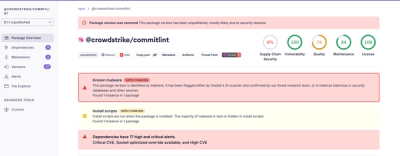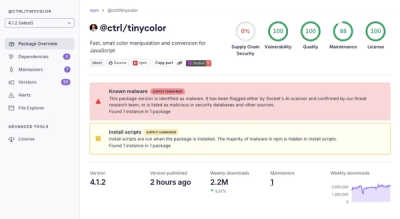

%matplotlib inline
import matplotlib.pyplot as plt
import torch.utils.data
import torch.nn
from random import randrange
import os
os.environ["WDS_VERBOSE_CACHE"] = "1"
os.environ["GOPEN_VERBOSE"] = "0"
The WebDataset Format
WebDataset format files are tar files, with two conventions:
- within each tar file, files that belong together and make up a training sample share the same basename when stripped of all filename extensions
- the shards of a tar file are numbered like
something-000000.tar to something-012345.tar, usually specified using brace notation something-{000000..012345}.tar
You can find a longer, more detailed specification of the WebDataset format in the WebDataset Format Specification
WebDataset can read files from local disk or from any pipe, which allows it to access files using common cloud object stores. WebDataset can also read concatenated MsgPack and CBORs sources.
The WebDataset representation allows writing purely sequential I/O pipelines for large scale deep learning. This is important for achieving high I/O rates from local storage (3x-10x for local drives compared to random access) and for using object stores and cloud storage for training.
The WebDataset format represents images, movies, audio, etc. in their native file formats, making the creation of WebDataset format data as easy as just creating a tar archive. Because of the way data is aligned, WebDataset works well with block deduplication as well and aligns data on predictable boundaries.
Standard tools can be used for accessing and processing WebDataset-format files.
bucket = "https://storage.googleapis.com/webdataset/testdata/"
dataset = "publaynet-train-{000000..000009}.tar"
url = bucket + dataset
!curl -s {bucket}publaynet-train-000000.tar | dd count=5000 2> /dev/null | tar tf - 2> /dev/null | sed 10q
PMC4991227_00003.json
PMC4991227_00003.png
PMC4537884_00002.json
PMC4537884_00002.png
PMC4323233_00003.json
PMC4323233_00003.png
PMC5429906_00004.json
PMC5429906_00004.png
PMC5592712_00002.json
PMC5592712_00002.png
Note that in these .tar files, we have pairs of .json and .png files; each such pair makes up a training sample.
WebDataset Libraries
There are several libraries supporting the WebDataset format:
webdataset for Python3 (includes the wids library), this repository- Webdataset.jl a Julia implementation
- tarp, a Golang implementation and command line tool
- Ray Data sources and sinks
The webdataset library can be used with PyTorch, Tensorflow, and Jax.
The webdataset Library
The webdataset library is an implementation of PyTorch IterableDataset (or a mock implementation thereof if you aren't using PyTorch). It implements as form of stream processing. Some of its features are:
- large scale parallel data access through sharding
- high performance disk I/O due to purely sequential reads
- latency insensitive due to big fat pipes
- no local storage required
- instant startup for training jobs
- only requires reading from file descriptors/network streams, no special APIs
- its API encourages high performance I/O pipelines
- scalable from tiny desktop datasets to petascale datasets
- provides local caching if desired
- requires no dataset metadata; any collection of shards can be read and used instantly
The main limitations people run into are related to the fact that IterableDataset is less commonly used in PyTorch and some existing code may not support it as well, and that achieving an exactly balanced number of training samples across many compute nodes for a fixed epoch size is tricky; for multinode training, webdataset is usually used with shard resampling.
There are two interfaces, the concise "fluid" interface and a longer "pipeline" interface. We'll show examples using the fluid interface, which is usually what you want.
import webdataset as wds
shuffle_buffer = 10
pil_dataset = wds.WebDataset(url).shuffle(shuffle_buffer).decode("pil").to_tuple("png", "json")
/Users/tbreuel/proj/webdataset/src/webdataset/compat.py:379: UserWarning: WebDataset(shardshuffle=...) is None; set explicitly to False or a number
warnings.warn("WebDataset(shardshuffle=...) is None; set explicitly to False or a number")
The resulting datasets are standard PyTorch IterableDataset instances.
isinstance(pil_dataset, torch.utils.data.IterableDataset)
True
for image, json in pil_dataset:
break
plt.imshow(image)
<matplotlib.image.AxesImage at 0x12fec5050>

We can add onto the existing pipeline for augmentation and data preparation.
import torchvision.transforms as transforms
from PIL import Image
preproc = transforms.Compose([
transforms.Resize((224, 224)),
transforms.ToTensor(),
lambda x: 1-x,
])
def preprocess(sample):
image, json = sample
try:
label = json["annotations"][0]["category_id"]
except Exception:
label = 0
return preproc(image), label
dataset = pil_dataset.map(preprocess)
for image, label in dataset:
break
plt.imshow(image.numpy().transpose(1, 2, 0))
<matplotlib.image.AxesImage at 0x1677a1250>

WebDataset is just an instance of a standard IterableDataset. It's a single-threaded way of iterating over a dataset. Since image decompression and data augmentation can be compute intensive, PyTorch usually uses the DataLoader class to parallelize data loading and preprocessing. WebDataset is fully compatible with the standard DataLoader.
Here are a number of notebooks showing how to use WebDataset for image classification and LLM training:
The wds-notes notebook contains some additional documentation and information about the library.
The webdataset Pipeline API
The wds.WebDataset fluid interface is just a convenient shorthand for writing down pipelines. The underlying pipeline is an instance of the wds.DataPipeline class, and you can construct data pipelines explicitly, similar to the way you use nn.Sequential inside models.
dataset = wds.DataPipeline(
wds.SimpleShardList(url),
wds.shuffle(100),
wds.split_by_worker,
wds.tarfile_to_samples(),
wds.shuffle(shuffle_buffer),
wds.decode("pil"),
wds.to_tuple("png", "json"),
wds.map(preprocess),
wds.batched(16)
)
batch = next(iter(dataset))
batch[0].shape, batch[1].shape
(torch.Size([16, 3, 224, 224]), (16,))
Secure Mode
You can run WebDataset in a mode that improves security. This disables the pipe: and file: protocols, as well as attempts to decode Python pickles. This should disable simple attacks and no successful attacks are currently known; rely on this mode at your own risk.
You enable secure mode by setting webdataset.utils.enforce_security = True before you start using the library. You can also set WDS_SECURE=1 in your environment.
Installation and Documentation
$ pip install webdataset
For the Github version:
$ pip install git+https://github.com/tmbdev/webdataset.git
Here are some videos talking about WebDataset and large scale deep learning:
Dependencies
The WebDataset library only requires PyTorch, NumPy, and a small library called braceexpand.
WebDataset loads a few additional libraries dynamically only when they are actually needed and only in the decoder:
- PIL/Pillow for image decoding
torchvision, torchvideo, torchaudio for image/video/audio decodingmsgpack for MessagePack decoding- the
curl command line tool for accessing HTTP servers
- the Google/Amazon/Azure command line tools for accessing cloud storage buckets
Loading of one of these libraries is triggered by configuring a decoder that attempts to decode content in the given format and encountering a file in that format during decoding. (Eventually, the torch... dependencies will be refactored into those libraries.)






